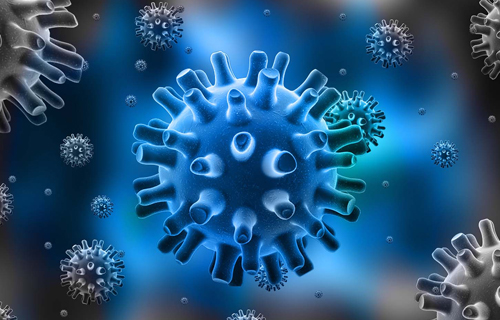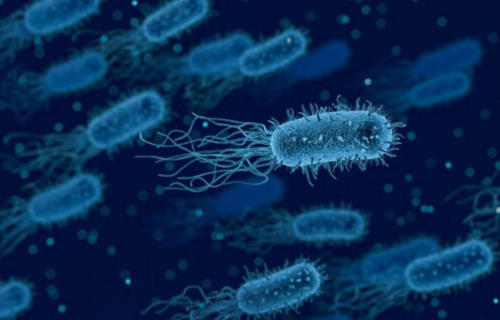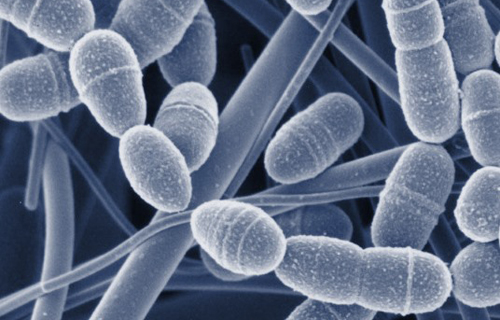
Infectious Diseases worldwide health and medical information
What is infections?
Infection refers to an invasion of the body by harmfulmicroorganisms or parasites. Infections range from mild swelling to fatal conditions.
Overview
An infection happens when a foreign organism enters a person's body and causes harm. The organism uses that person's body to sustain itself, reproduce, and colonize. These infectious organisms are known as pathogens. Examples of pathogens include bacteria, viruses, fungi, and prions. Pathogens can multiply and adapt quickly. Some infections are mild and barely noticeable, but others are severe and life-threatening, and some are resistant to treatment. Infection can be transmitted in a variety of ways. These include skin contact, bodily fluids, contact with feces, airborne particles, and touching an object that an infected person has also touched. How an infection spreads and its effect on the human body depend on the type of agent. The immune system is an effective barrier against infectious agents, but colonies of pathogens may grow too large for the immune system to fight. At this stage, infections become harmful. Many pathogens give off toxins that trigger negative responses from the body.
Types
This article will focus on the most common and deadly types of infection: Bacterial, viral, fungal, and parasitic.
Viral infections

Viruses are very tiny infectious organisms. They're even smaller than bacteria. On the most basic level, a virus is composed of a piece of genetic material that's surrounded by a protein shell. Some viruses may have an additional envelope or other features on their surface.
Viruses are parasitic and require a host cell in which to carry out their life cycle. Once the virus has entered the host cell, it's able to use cellular components to reproduce. New viruses are released from the host cell, a process that'll sometimes cause the host cell to die.
Most of the time, the treatment of viral infections centers on relieving symptoms until your immune system clears the infection. In some cases, antiviral drugs may be available to help treat a viral infection. Some examples of viral infections for which antivirals are available include HIV, herpes, and hepatitis C. Some viruses stay with you for life once you've been infected. They can lie dormant within your body and may reactivate. Some examples include herpes virus (HSV) and varicella-zoster virus (VZV).
Bacterial infections

Bacteria are single-celled microorganisms. They're very diverse, coming in a variety of different shapes and sizes. Bacteria can be found in all sorts of environments, including soil, bodies of water, and in or on our bodies. Some can survive extreme temperatures or even radiation exposure. Although there are a great many bacteria in and on our bodies, these bacteria often don't cause disease. In fact, the bacteria in our digestive tract can help us digest our food. However, sometimes bacteria can enter our bodies and cause an infection. Bacterial infections are most often treated with antibiotics. Antibiotics are medications that affect bacterial growth. They can either impede bacteria from multiplying or kill them outright.
There are different classes of antibiotics. The one you're prescribed will depend on what type of bacterium is causing your infection. Additionally, misuse of antibiotics has caused many bacteria to develop resistance to them. If you're prescribed antibiotics for a bacterial infection, take the entire course of antibiotics — even if you begin to feel better after a few days. Not doing this can prevent the infection from clearing and can contribute to antibiotic resistance.
Fungal infections

Fungi are another diverse group of organisms that can include things like yeasts and molds. They can be found throughout the environment, including in the soil, indoors in moist areas like bathrooms, and on or in our bodies. Sometimes fungi are so small that you can't see them with the naked eye. Other times, you're able to see them, such as when you notice mold on your bathroom tile. Fungal infections can be treated with antifungal medications. The type of medication that you're prescribed will depend on the type of fungal infection you have. For example, a topical antifungal cream may be prescribed for conditions like ringworm or athlete's foot. Oral antifungal medications, such as fluconazole (Diflucan), are also available. More severe fungal infections may require intravenous (IV) antifungal medication.
A fungus is an often multi-cellular parasite that can decompose and then absorb organic matter using an enzyme. They almost always reproduce through the spreading of single-celled spores, and the structure of a fungus is normally long and cylindrical with small filaments branching from the main body. This structure is known as hypha. There are approximately 51 million species of fungus. Many fungal infections will appear in the upper layers of the skin, and some progress to the deeper layers. Inhaled fungal spores can lead to systemic fungal infections, such as thrush, or candidiasis. Systemic diseases affect the whole body. A rash can be an indicator of a fungal infection of the skin.
Parasitic infections

Parasites live on or in a host organism and get food or other nutrients at the host's expense. There are three types of parasites that can cause illness in humans:
Protozoa: small, one-celled organisms.
Helminths: larger, worm-like organisms.
Ectoparasites: organisms such as fleas, ticks, and lice.
As with bacterial and fungal infections, there are specific drugs available to treat a parasitic infection. The type of antiparasitic medication that you'll need to take will depend on the type of parasite that's causing your infection.
Causes of infection transmission
You can get an infection in many different ways.
Some, but not all, infections can spread when you come directly into contact with a person who has an infection, whether through touching, kissing, or having sex. Direct contact with the bodily fluids of a person who has an infection can also spread infections in some instances. Lastly, some infections can be spread directly from an infected mother to her child either through the placenta or during childbirth.
Some infectious organisms can be found throughout your environment. You can come into contact with these things and then spread the infection to yourself. A common example of this is when someone with the flu coughs or sneezes. Influenza virus can then be present in the air or on objects such as door and faucet handles. If you touch a contaminated object and then touch your face, mouth, or nose, you may become infected.
In some cases, food or water may be contaminated with infectious organisms. You can get these infections by consuming this things.
Some infections are spread to people from an infected animal. One example is the rabies virus, which you can get if an infected animal bites you.
There are many different types of biting bugs, including ticks, mosquitoes, and lice. In some cases, you can get an infection if a bug carrying around an infectious microorganism bites you.
Not all infections are spread in the same way. While one infection may be transmitted via infected blood, another may be transmitted by the bite of an insect. It's always important to consider the specific infection when talking about transmission.
Preventing infection
There are many actions that you can take to prevent the spread of infections. Be sure to follow the tips below:
Practice good hand hygiene. Wash your hands often, especially before eating or handling food, after using the toilet, and before touching your face or mouth. Get vaccinated. Many infections can be prevented through vaccines. Avoid sharing personal items. These include drinking glasses, toothbrushes, and razor blades. Practice safe sex. Cover cuts or scrapes. This can lessen the chances that they'll become infected. Don't pick or scratch them. Use insect repellents or sprays. These products can help you avoid being bitten by mosquitoes or ticks. Be careful with food. Always prepare food in sanitary conditions, and make sure it's heated to the proper temperature before eating. Avoid wild animals. Make sure to have any animal bites examined by a doctor. If you're traveling, be aware of any infections common to the area where you'll be staying.
Conclusion
While the forms of infection mentioned above are the main types, there are othersTrusted Source that can have an effect on the body. While some infections may be treated at home, you should always contact your doctor if you have symptoms of an infection that aren’t getting better, are getting worse, or recur.
Research
A History of Biological Warfare from 300 B.C.E. to the Present
Vaccines and treatment options for COVID-19 are currently being investigated around the world. There’s some evidence that certain medications like Chloroquine may have the potential to be effective with regard to preventing illness or treating the symptoms of COVID-19.
Buy Hydroxychloroquine (Generic Plaquenil) Is chloroquine or hydroxychloroquine useful in treating people with COVID-19
Diflucan In this current study we investigated important drug interactions for the Antifungal drug Fluconazole (Diflucan).
Categories
- Allergy
- Alcohol Addiction
- Anxiety
- Cardiology
- Depression
- Dermatology
- Endocrinology
- Phlebology
- Diabetes
- Herpes Viruses
- Gastroenterology
- General Health
- Gerontology
- Hematology
- Hepatology
- Immunology
- Infectious Diseases
- Men's Health
- Neurology
- Obesity
- Oncology
- Ophthalmology
- Orthopedics & Sports Medicine
- Parasitic Diseases
- Pediatrics
- Psychiatry
- Radiology
- Respiratory
- Rheumatology
- Smoking Cessation
- Urology
- Women's Health